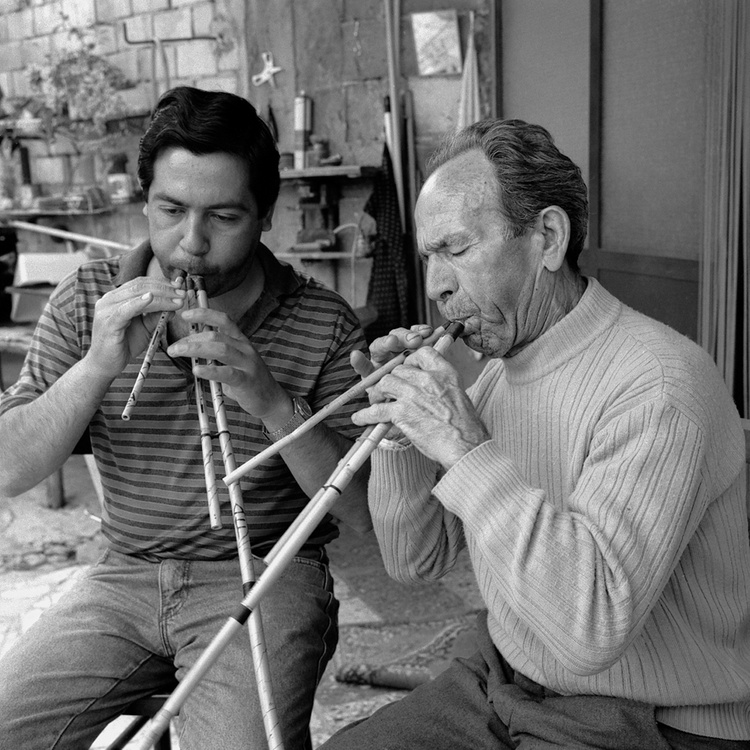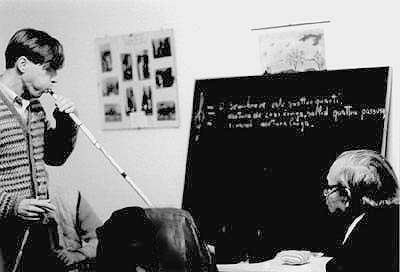Conversation with artist Michel Aubry: Objects materialized out of sound
the artistic universe of Michel Aubry, French artist who lives and works in Paris, is home to a perfect relation between music and sculpture, an analogy that emerges from the artist’s fondness for woodwind instruments.
In the late ‘80s he learns about the Launeddas, an instrument composed of three reed pipes that has been played for millennia in Sardinia. We’re looking at a popular instrument whose art has been handed down orally without scores, in a climate where rural life merges with melody. Launeddas can be heard during religious and local events, their music is relational and is performed through a circular breathing technique.
Mesmerized by Laudennas, Michel Aubry developed his work objectifying the sound into sculpture. Adopting the conversion chart devised in 1992, the tones are converted into metric lengths utilized as measures to generate objects in space. Just like Le Corbusier used to employ the Modulor to design on a human scale, Aubry relies on the chart to formulate analogies between sounds and shapes.
We cannot start this interview without wondering how and when you became familiar with Laudennas.
M.A. Actually I became interested in this instrument the first time in France at the beginning on the ‘80s on the occasion of a traditional music festival. Since I play the bagpipe and know well its history and restoration techniques, it seemed to me that the Launeddas were a fundamental instrument in order to appreciate its musical tradition.
From such a strong interest in 1985 I included the Launeddas in a traditional instruments exhibition of
which I was the curator.
We spotted a photo on the internet where you’re playing the Laudennas with Dionigi Burranca. Would you like to tell us about this particular gathering or other meaningful events that took place during your stay on the island?
M.A. I met Dionigi Burranca on the occasion of his invitation to the Rencontres internationales de luthiers et maîtres sonneurs, a festival of popular music and dance that is held at Saint-Chartier and was quite struck by his musical technique.
When I arrived in Sardinia I was placed in contact with all the musicians through Dante Olianas. I met again Dionigi Burranca in his workshop. I often went to his house at Ortacesus in order to talk about music, but also to learn from him how to work the pipes to properly build the instrument. The photo you are referring to must have been shot on that occasion.
In my stay in the island I met other musicians like Aurelio Porcu, an exceptional performer, that I recorded for long time and Franco Melis who lead my research in a very friendly manner.
![]() Dionigi Burranca, Ortacesus, 1985 Photo by Michel Aubry
Dionigi Burranca, Ortacesus, 1985 Photo by Michel Aubry
How has this instrument inspired your works, and what is the connection between the music and your sculpture?
M.A. These times in Sardinia and the discovery of this instrument richness have deeply transformed my artistic work. Using the pipes, which seem to grow naturally to produce music, has allowed me to develop a correspondence between music and spatial design. This correspondence extends to the measurements of the human body, like in clothing, in furnishing or in architecture.
I also learned a lot on how to organise a collection of instruments for the opening of the Nuoro Ethnographic Museum. I worked in the categorization of the Launeddas families, I studied in detail their musical structure and production. In 1992, we filmed and recorded all the musicians and manufacturers during the instruments collection. I took advantage of the year I spent at Villa Médicis, The Academy of France in Rome, to carry out that study.
Many sculptures and installations can be seen as references to this research work. In one of the works from the collection of the Musée d'Art Contemporain de Lyon, there is even a billiard room whose sonic floor contains the memory of the musical structure of the 50 instruments that I considered appropriate to collect for the Musée Ethnographique collection.

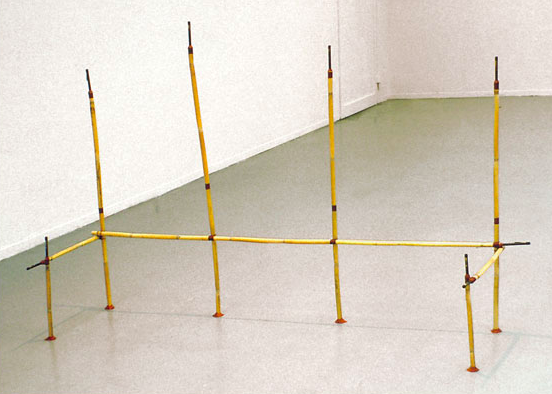
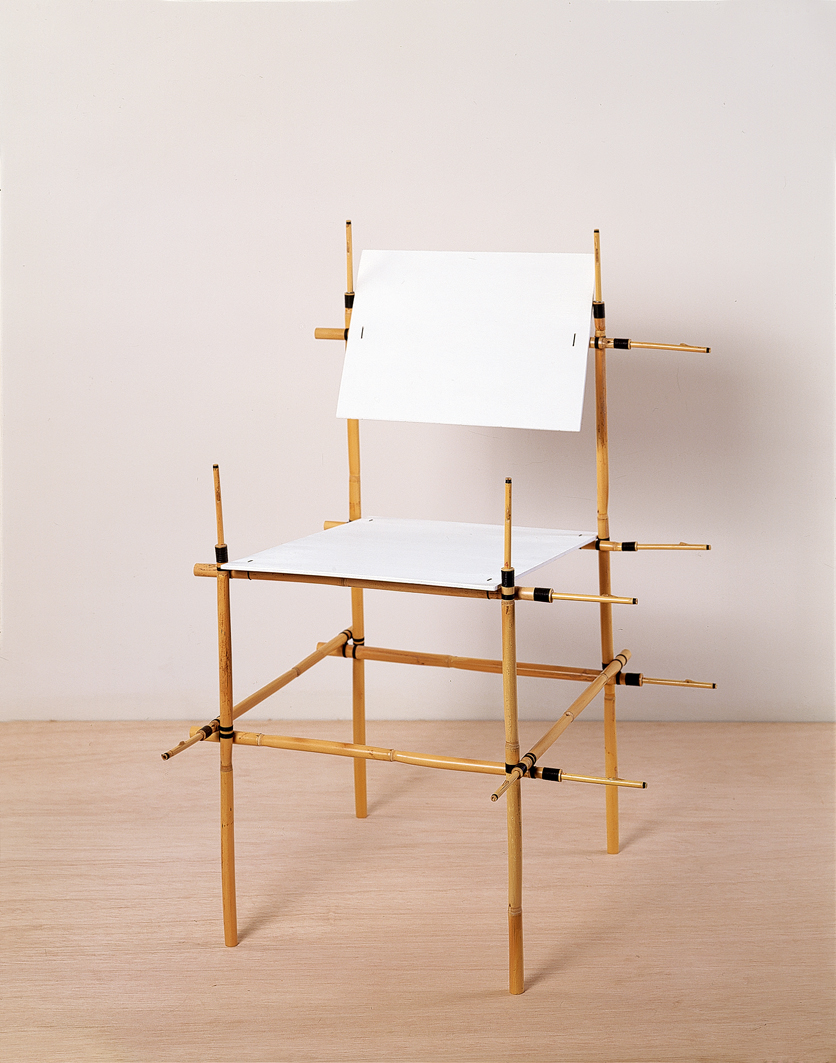
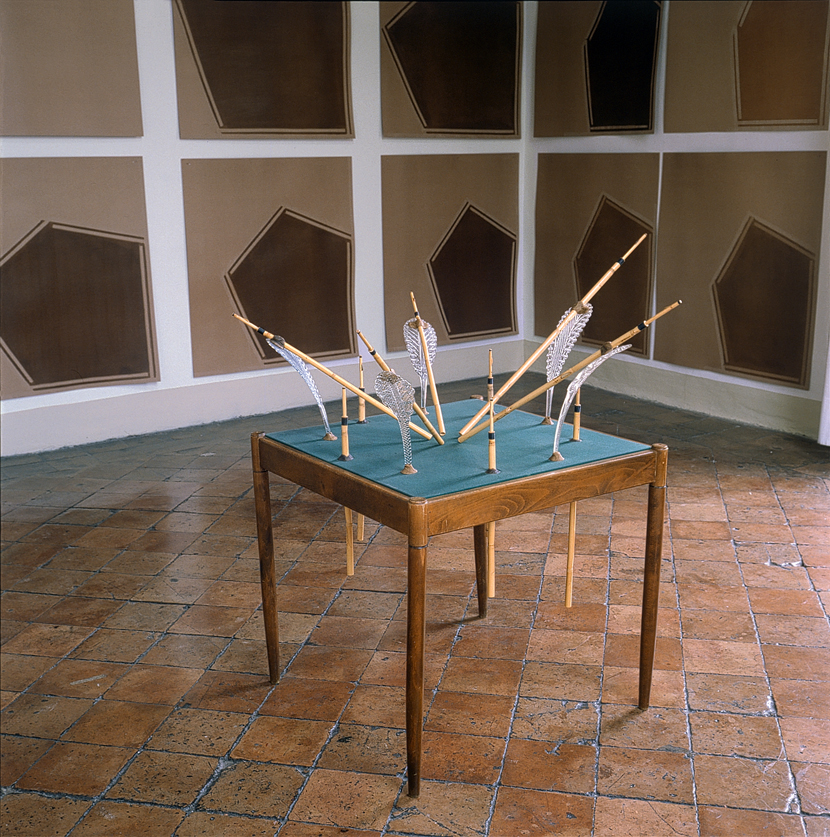
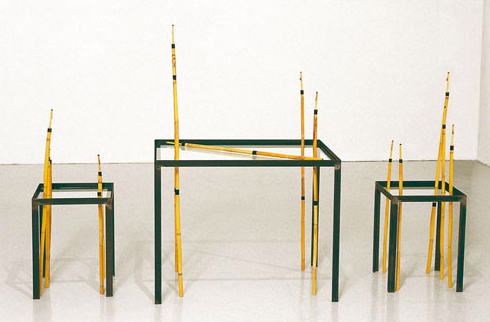
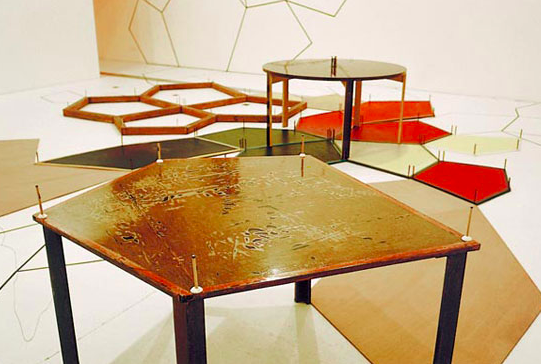

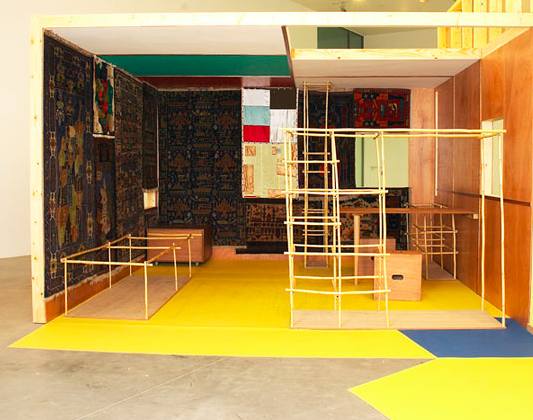
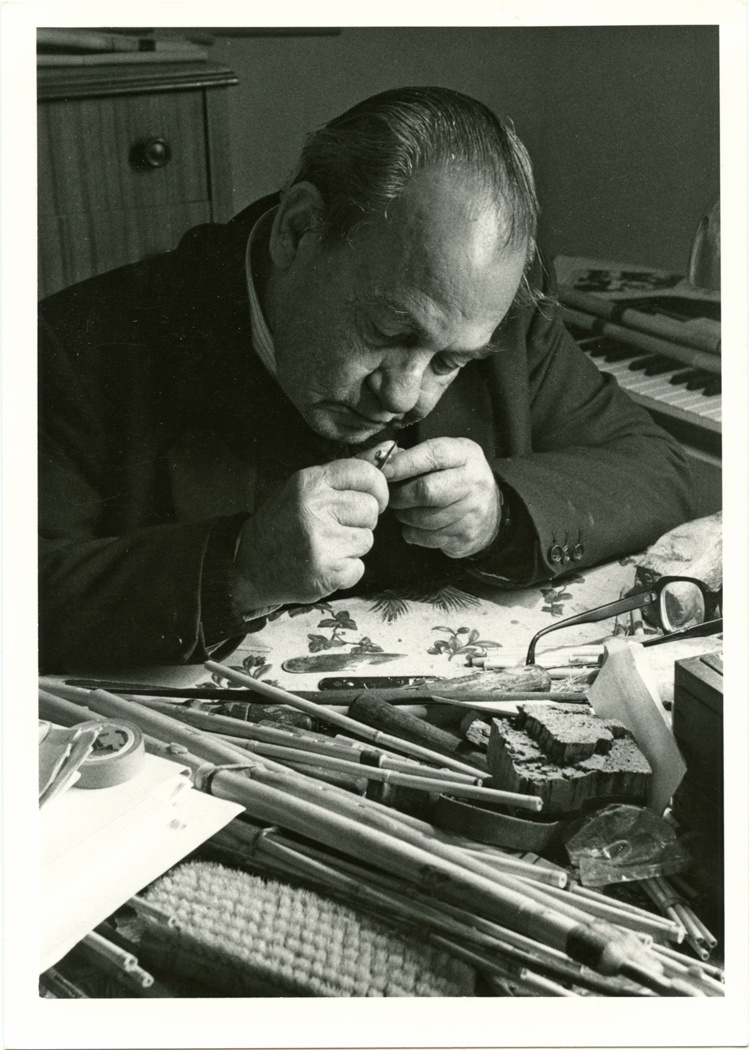 Dionigi Burranca, Ortacesus, 1985 Photo by Michel Aubry
Dionigi Burranca, Ortacesus, 1985 Photo by Michel Aubry